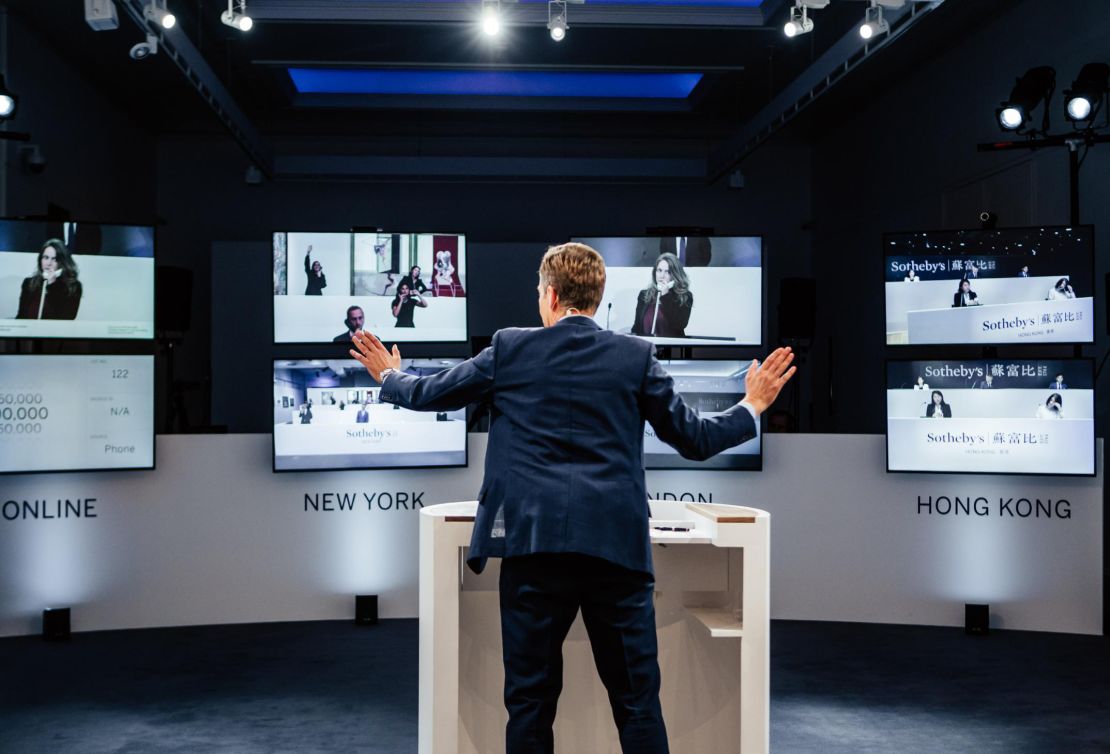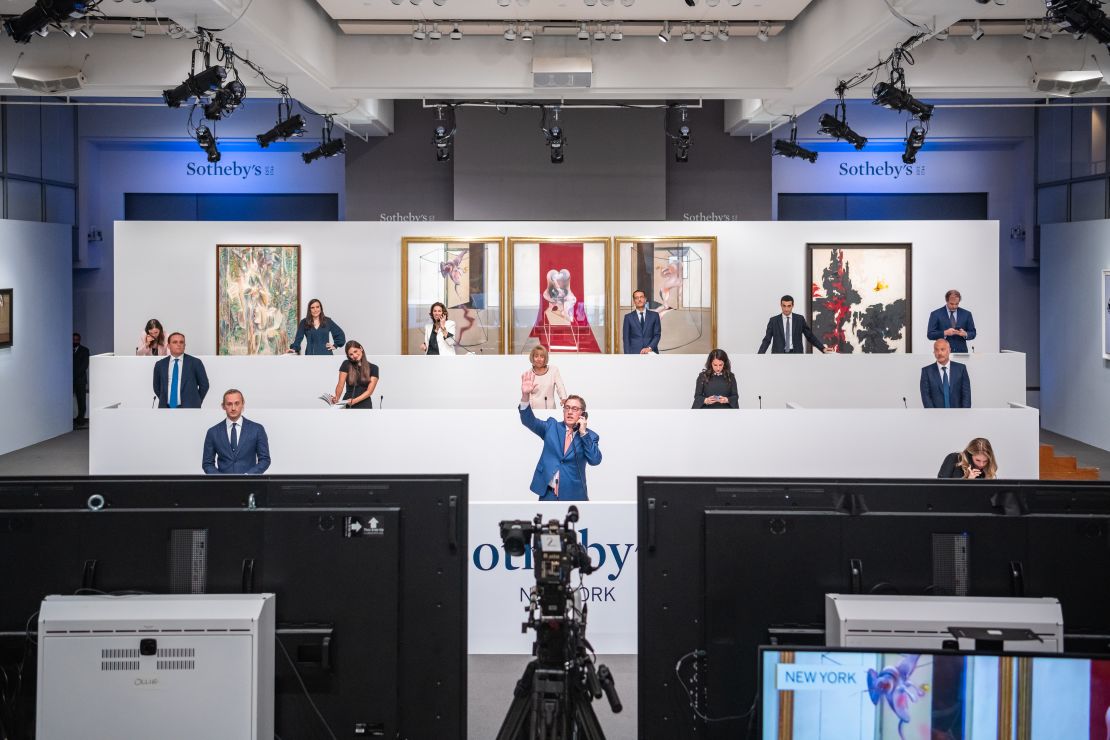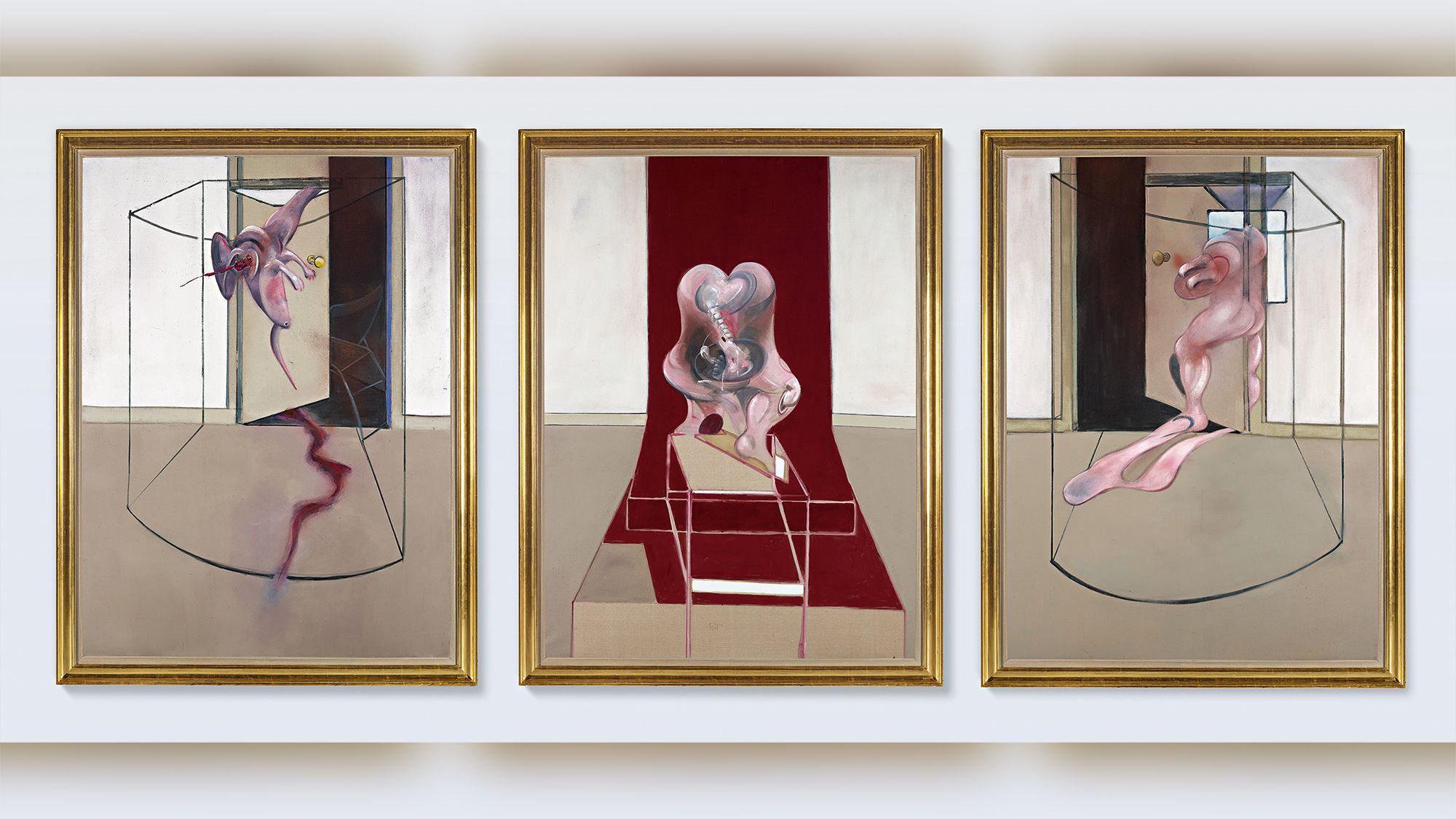A Francis Bacon triptych sold for over $84 million during a virtual auction at Sotheby’s, on what was an encouraging – and highly unusual – evening for the coronavirus-hit art market.
With an auctioneer live-streaming from London, and telephone bids beamed in from New York and Hong Kong, the painter’s 1981 artwork “Triptych Inspired by the Oresteia of Aeschylus” exceeded pre-sale estimates of between $60 million and $80 million.
Monday evening’s marathon sale marked the first time that Sotheby’s has trialed its “hybrid” auction format, which saw chairman of Sotheby’s Europe, Oliver Barker, taking bids from agents around the world via a wall of screens. In a press statement Barker described the experience as “like being at the epicenter of a cinematic production.”

Bidders were also able to make offers online, with the 10-minute battle for Bacon’s painting ending in a two-horse race between a web user in China and an unidentified telephone bidder. The final price tag of $84.6 million, offered by the latter, marks the third-highest sum ever paid for the artist’s work at auction, according to Sotheby’s.
There were other positive signs at the evening event, which consisted of three separate sales. Roy Lichtenstein’s “White Brushstroke I” went for $25.4 million, while Jean-Michel Basquiat’s “Untitled (Head)” achieved $15.2 million, a new world auction record for a work on paper by the artist.
The evening generated a total of $363.2 million for Sotheby’s, with 93% of the artworks offered eventually selling. According to Gregoire Billault, head of the auction house’s contemporary art department in New York, it bodes well for the coming months.

“Tonight was a very clear demonstration that, even in very difficult times, if you come up with the right (artworks) at the right prices, the market is there,” he said over the phone shortly after the sale, admitting that staging the auction in the current climate had been “a risk.”
“It’s definitely going to influence what we’re going to do in the future,” he added. “Whether we’re going to repeat (this exact format) I don’t know, but we know it’s possible and that it works.”
Difficulties remain
Yet, these remain troubling times for an industry that has been severely hampered by the inability to stage live sales. With lockdowns around the world forcing auction houses to cancel and postpone events, Sotheby’s has already furloughed and laid off staff amid a collapse in revenues.
Despite efforts to boost digital offerings in recent months, the top end of the art market is still heavily dependent on live sales and in-person viewings. Proceeds from online-only auctions represent relative pocket-change for the big houses – just $80 million of the total $4.8 billion generated by Sotheby’s in 2019 came via the web.
The auction house has, nonetheless, made efforts to compensate for the lack of physical events. Its “Contemporary” sale set a new online record in April when it generated more than $6.4 million through works by the likes of Andy Warhol and Damien Hirst. The $1.3 million paid for George Condo’s “Antipodal Reunion” may have represented just a fraction of the sums seen on Monday evening, but it was the most Sotheby’s has ever raised for an artwork through online-only bidding.

But while the apparent success of this “hybrid” auction will no doubt come as a relief, there remain questions around the appetite for blue-chip art amid a global economic downturn. Moreover, the Bacon painting was consigned long before the pandemic took hold in the West, meaning that potential buyers were able to view the artwork up close in Hong Kong and London prior to the sale.
Whether potential sellers will still want to put multi-million-dollar art on sale in the current climate – or whether buyers will splash out on big-ticket items they cannot inspect in person – remains to be seen.
Billault nonetheless struck an upbeat chord, saying that Sotheby’s had still been able “to consign amazing works during the Covid period.”
“We have sent a signal to the art market after all these difficult times, with fairs canceled and museums closed,” he said, adding: “It’s a vote of confidence both for sellers and buyers.”
Top image: “Triptych Inspired by the Oresteia of Aeschylus,” 1981, by Francis Bacon

